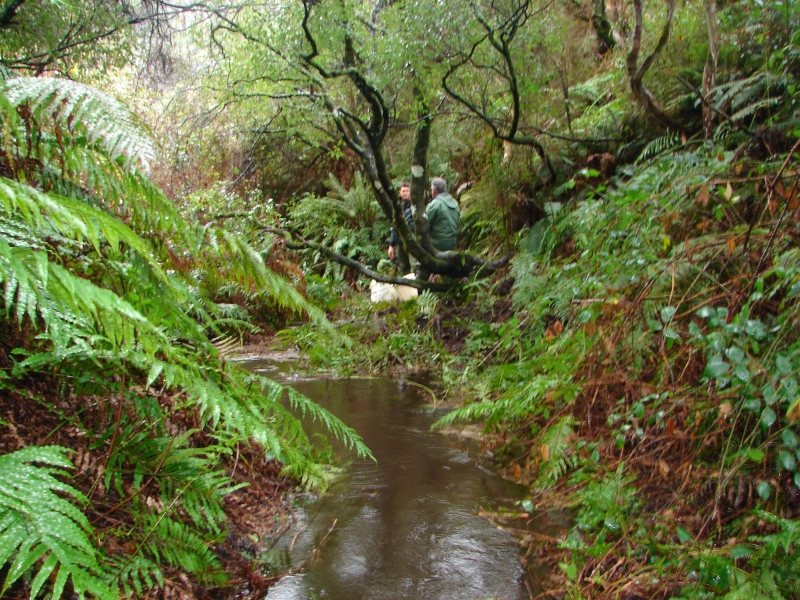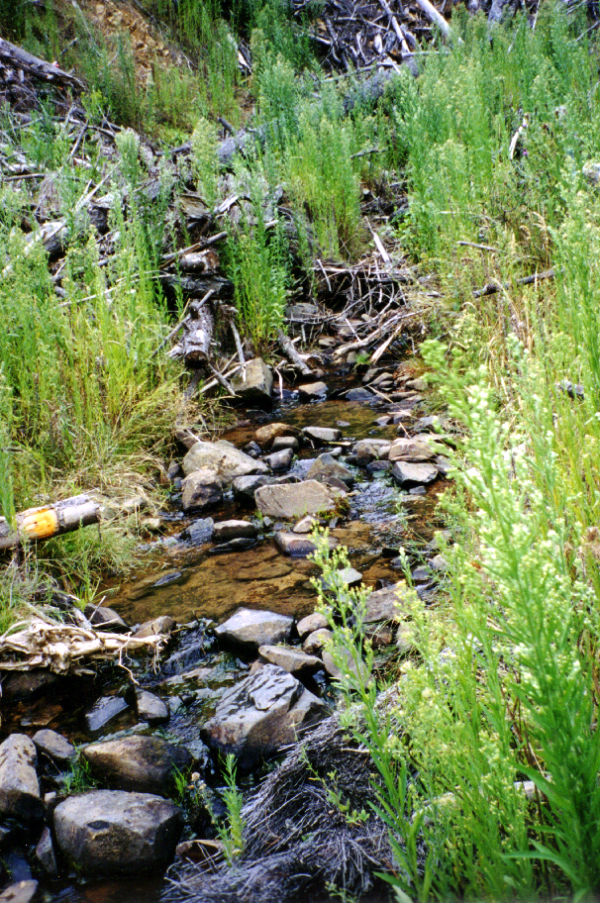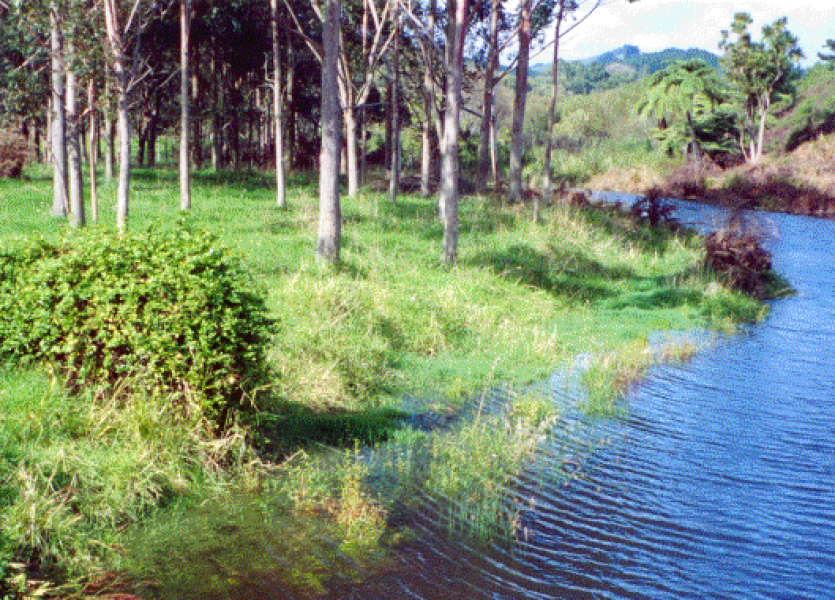Cover habitat for fish can be riparian (i.e. over the stream) or instream (e.g. wood debris or boulders).
Riparian cover for fish includes trees which provide shade and overhanging plants which provide protection from aquatic predators. Instream cover includes rocks or wood debris in the water. These provide refuge from flood flows and fish predators such as eels or shags.
Different fish species require varying forms of cover, e.g. tree canopies for banded kokopu, giant kokopu and koaro, and low-growing toi toi, flax or grass hanging over the water edge for inanga. Spawning habitat for inanga on streambanks requires specific types of riparian cover.
Managing inanga spawning habitat
What to do:
Remedy the lack of cover by erecting fencing and planting vegetation (however, it can take up to 10 years for tree canopies to establish). Removing willows is advisable, but willow roots often provide good cover for fish such as giant kokopu, giant bully and longfin eels. It is recommended that you top and poison willows so the roots remain, allowing other trees to become established.
Provide instream cover by securing wood debris and boulders on the streambed. As little is known about what characteristics of instream cover are important to fish species, the effectiveness of this technique is unknown . If log jams are artificially created, there is the risk they will wash downstream and pile up, creating flooding or a washout. It is safer to place rocks and boulders in the streambed. Consult your regional council before attempting to add material in stream beds.
Table: Types of riparian/instream cover required by native fish
| Species | Riparian (overhead) cover | Instream cover |
| Banded kokopu | Riparian trees with canopy closure over stream | Holes under the bank, in wood debris, beneath large rocks |
| Giant kokopu | Riparian trees with canopy closure over stream | Holes in the banks of large pools |
| Koaro | Riparian trees with canopy closure over stream | Rock/boulder interstices in rapids |
| Shortjaw kokopu | Riparian trees with canopy closure over stream | Hole under rock/boulder in large pools |
| Inanga | Vegetation hanging over stream bank into water | Emergent vegetation and macrophytes |
| Torrentfish | None | Boulder interstices in rapids |
| Bluegill bully | None | Boulder interstices in rapids |
| Redfin bully | Riparian tree cover preferred, but not canopy closure | Rocks and boulders Holes under large (20 cm diameter) flat rocks are required for spawning |
| Longfin eel | None | Holes in hard or soft substrate |
| Shortfin eel | None | Holes in hard or soft substrate |
| Smelt | None | None |
| Common bully | None | None (except for spawning) Holes under large (20 cm diameter) flat rocks are required for spawning |
| Giant bully | Vegetation hanging over stream bank into water | None |




